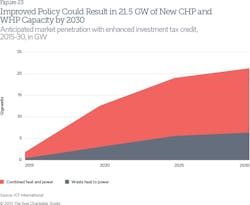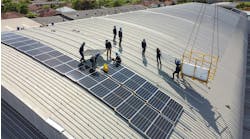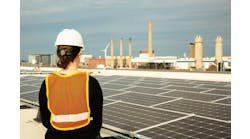In picking and choosing clean energy technology favorites, the U.S. Congress appears to be neglecting some important ones, among them fuel cells, combined heat and power (CHP) and small wind.
The Pew Charitable Trusts sees these technologies heading for neglect as solar and large-scale wind prosper, since Congress extended their federal tax incentives.
In December, Congress passed legislation providing for a five-year extension of the production tax credit (PTC) for wind, plus a five-year extension of the residential and investment tax credits (ITC) for solar. The incentive amounts decline over the five years.
But that move left out many other technologies used in microgrids, among them fuel cells, CHP, small wind, microturbines, biomass, biogas, geothermal, hydropower, and marine and hydrokinetic energy. All of these should be offered the same incentives, said Jessica Frohman Lubetsky, manager, Clean Energy Initiative, The Pew Charitable Trusts.
For some of these technologies, the credit has ended. For others, the credit ends at the end of this year, she said.
“In December the tax code was extended for wind and solar and not for all the other technologies that qualify for ITC and PTC,” she said. “We want to bring these technologies together and point out that Congress should not pick winners and losers but should look at all of the technologies.”
Pew has been working to get the credits extended for these technologies before the end of 2016. The focus is on two bipartisan bills under consideration in Congress, H.R. 5172 and H.R. 5167, which would provide consistent incentives for all the technologies.
The two bills are very similar, and concentrate on Sections 48 and 25D of the tax code, she said. Section 48 includes the solar extension and Section 25D provides for the residential credit–now available for solar rooftops. Other technologies like small wind are interested in getting that credit, said Lubetsky.
A 2015 analysis by Pew found that extending the investment tax credit for CHP and waste heat to power systems could increase deployment of those technologies by 26 percent over today’s installed capacity. The improved policy would add 21.5 GW of new CHP and WHP by 2030, according to the analysis.
Pew Analysis of Tax Extension on CHP and WHP
“The investment tax credit is crucial for the development of efficient, reliable, and resilient power supplies. Businesses and investors need stable, predictable federal tax policy to create jobs and commit capital. However, current policy not only prioritizes some sources of electricity over others, it also creates a financial cliff, jeopardizing long-term business investments. This dampens the development of clean energy technologies and the growth of industries that could fuel the future and limits choices for consumers,” said Pew.
Why are wind and solar the clean energy technology favorites in the U.S.? What can other technologies do to win the same incentives? Comment below or on our LinkedIn Group, Energy Efficiency Markets.
[clickToTweet tweet=”Hey, Congress. Solar and wind aren’t the only great forms of #cleanenergy. @pewtrusts” quote=”Hey, Congress. Solar and wind aren’t the only great forms of clean energy.”]








